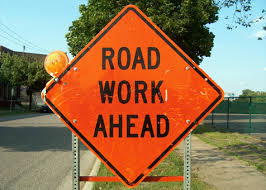Trend: A little growth in highway and government construction
Things are looking up in road building. Highway and bridge construction activity was strong in August, according to estimates from McGraw Hill Construction. Value of construction put in place exceeded July totals by double-digit rates.
Large projects that lifted the highway and bridge total in August included the $798 million Horseshoe Project in Dallas Texas, involving replacement of bridges over the Trinity River and road upgrades. Another major road initiative recently announced is the $743 million Bayonne Bridge project in Bayonne N.J., that involves raising the bridge roadway from 151 feet above the water to approximately 215 feet.
McGraw Hill Construction says the top five states for new highway and bridge construction starts in August were Texas, New Jersey, New York, California, and Illinois.
In the five years leading up to 2017, revenue for the road & highway construction industry is anticipated to increase at an average annual rate of 2.2 percent to $53.5 billion, say IBISWorld analysts in a recent report. 
Passage in mid-June, 2012 of the federal Moving Ahead for Progress in the 21st Century Act (MAP-21), should help the road construction industry rebound somewhat.
According to the IBISWorld report, state and local governments traditionally make up a little less that half (40.5 percent) of the public investment in highway construction. Tight budgets and increased spending on unemployment, social services and Medicaid forced some state and local governments to trim their funding for surface transportation projects during and after the Great Recession.
A boost in tax receipts from the improving economy should help state and local governments increase transportation infrastructure spending in the near term.
Firms in the road-building industry construct new highways, streets and airport runways (excluding elevated roadways). The industry also includes highway and street construction management firms and special trade contractors that perform subcontract work on projects (e.g. grading, laying pavement, installing guardrails and installing public sidewalks). Establishments may subcontract some or all of the actual construction work.
For ordering information for the Aug 2013 IBISWorld Industry Report 23411a, go here.
According to the American Institute of Architects’ (AIA) Consensus Construction Forecast Panel, we should see healthy if unspectacular gains for the remainder of 2013 in nonresidential construction activity (including government and institutional structures). The AIA panel predicts construction spending for buildings will rise by 5 percent in 2013 before accelerating to 7.2 percent in 2014.




















